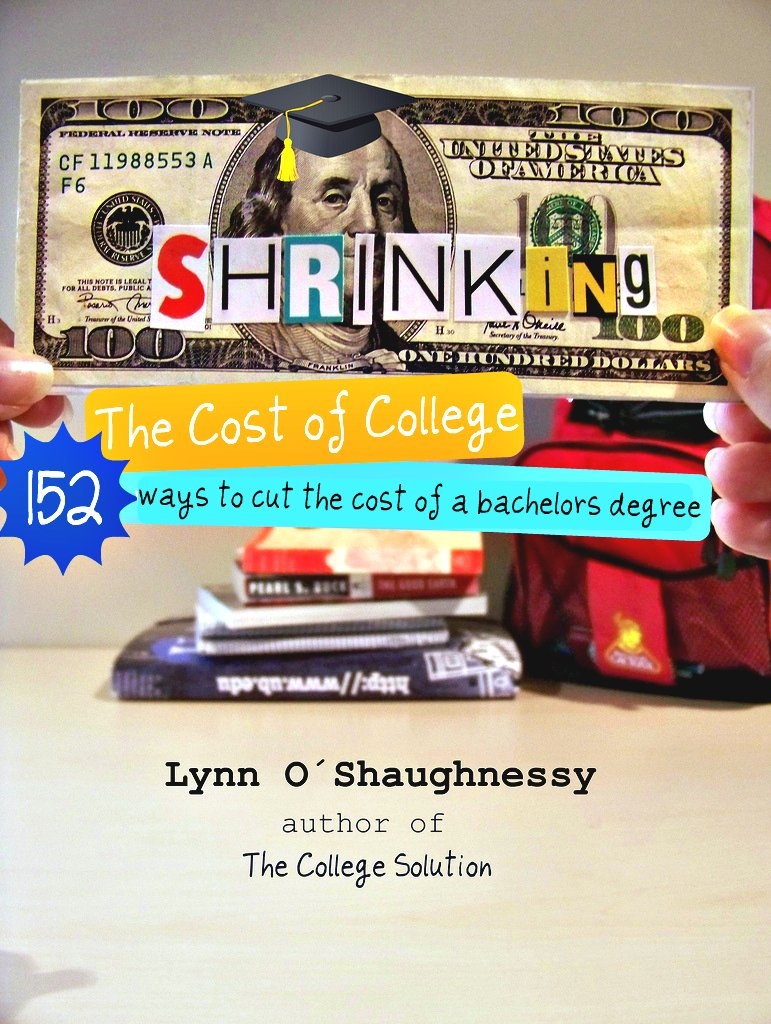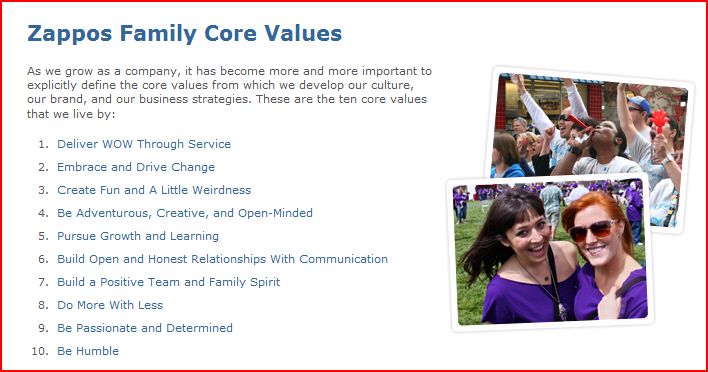Business Insider: Top Social Media Blogs
Twitter Followers or Facebook Fans: Which is better?

![]() photo credit: Franco Bouly
photo credit: Franco Bouly
The answer is Twitter according to research from ExactTarget. According to the study and reported on by Social Media Today, “Twitter followers are more likely to induce advocacy and future purchases” than those on Facebook. Social Media Today reported that “according to their data, 37% of respondents were more likely to purchase from a brand after following them on Twitter as opposed to only 17% of those that “like” a brand on Facebook.”
When the respondents were asked if they were more likely to recommend a Brand after following them on Twitter, 33% of Twitter followers were more likely to recommend a Brand compared to 21% of Facebook fans.
What has been your experience?
Social Media: The Eight Stages of Listening by Jeremiah Owyang
![]()
Social Commerce is Now via the Altimeter Group
Zappos CEO Tony Hsieh WOWs By Delivering Happiness
Last night I was lucky enough to spend nearly 90 minutes listening to Tony Hsieh, the CEO of Zappos, discuss how he got his start, his company, and why his number one priority is getting the company culture right. According to Tony, if Zappos gets the company culture right then everything else will turn out right.
Tony is currently on a multi-city bus tour aptly titled the “Delivering Happiness Bus Tour” which meshes with the recent launch of his best-selling book “Delivering Happiness: A Path to Profits, Passion, and Purpose”. According to the tour web site, the mission of the tour is to “inspire and be inspired.” He certainly did that last night at the Milken Institute.
Tony started his talk recounting when and why he sold his first company LinkExchange to Microsoft for $265 million back in 1999 at the age of 24. He had co-founded the company with a friend and they in turn hired more friends. After about 20 hires, according to Hsieh, they ran out of friends and then started hiring people who were going to make the company really grow and be successful. But that’s when it stopped being fun for Tony. The company culture had changed and it was no longer fun to get out of bed.
His next move was joining Zappos originally as an investor and adviser and eventually as CEO. Tony was determined that the most important thing to make the company successful in the long term was to get the company culture right. And equally important to Tony is to make sure the company is making an emotional connection to their customers.
Tony’s mantra at Zappos is “Wow. How do we wow our customers and our vendors?” And to Tony that means taking the money that they would spend on advertising and folding it into customer service, because, “we just want to be about customer service and maximizing the customer experience.”
In order to make sure they are “wowing” their customers, Zappos throws out a lot of the accepted industry practices around call centers. Many call centers’ mission is to get customers on and off the phones as quickly as possible to decrease the average handle time and thereby maintain their profits. Zappos is the opposite. Tony boosted that Zappos Call Center had recently broken a company record by having a 7 ½ hour customer conversation.
Although 95% of all the sales go through the Internet Tony believe that the telephone is one of the company’s best branding devices. Tony reported that since every customer calls at least once it was extremely important that they get this one call right. And this is one of the reasons that the call center is really at the heart of their business.
Everyone that is hired at Zappos—no matter their position—goes through a four week call center training period with two of those weeks being on the phone as call center agents. But getting hired is even trickier. To Tony there is nothing more important than hiring the right people who are going to fit into the culture and not disrupt it. And to get hired you must be a fit with everyone including the driver that brings you to and from the airport for your interview. Every voice matters.
Tony spoke a great deal about the science of happiness and how he has rolled that into his own company’s mission. Back in 1999 Zappos defined their brand and vision as providing “selection”. In 2003 the company defined their brand and vision as “customer service.” Today the company sees their brand and vision as “delivering happiness.”
Tony stressed the importance of “chasing the vision and not the money.” He believes that you can use happiness as a business model and that businesses with a higher purpose make money in the long term.
You can learn more about the “Delivering Happiness Movement” at http://www.deliveringhappinessbook.com/jointhemovement/.
Can his ideas work in your company?
Retailers Adopting Social Strategy Whether They Want to or Not
Retailers are being forced to adopt a social strategy according to new research published in August 2010 by the Aberdeen Group and reported by eMarketer today. eMarketer reports that consumers are using “social networks and other tools like Twitter to discuss brands and products and to get advice and feedback from friends and family on potential purchase decisions–and retailers have noticed.”
According to retailers surveyed by Aberdeen the top social media tools used by retailers included social networks (85%), microblogging (51%), and blogging (41%). Furthermore, eMarketer noted:
In Q1 2010, the e-tailing group also found that social networks were the top community or social tool retailers used or planned to use in the next year; Facebook fan pages specifically were cited by 91% of respondents to that survey. Four in five used or planned to use Twitter, 72% blogs and 71% Facebook Connect. The e-tailing survey was conducted before Facebook introduced its “like” feature, which has also been widely adopted by retailers including Levi’s and Sephora.
How about your company? Are you working on your social strategy? Your customers expect it.
Are You Afraid of Bloggers and Social Media? Maybe You Should Be.
Are you or your Brand afraid of bloggers and social media? Well, maybe you should be–especially if your brand is still sitting on the side lines and not listening. Jessica Gottlieb , a powerful voice on the Internet and a mom blogger, recently wrote two excellent posts “Five Simple Steps to Bringing a Brand to their Virtual Knees” and “Six Tips for Brand Managers Who Might Be Afraid of Bloggers” . Gottlieb is that “Jessica Gottlieb” that started the “#MotrinMoms” backlash on Twitter in November 2008.
Gottlieb expressed her displeasure with Motrin’s ad campaign that she and others felt wasn’t supportive of new mothers and in a series of tweets expressed that “picking on new mothers is vile.” Her tweets set off a reaction that reverberated across Twitter and then the Internet and finally the mainstream press and it wasn’t until Monday that Motrin finally responded to the moms they were trying so hard to connect with but by then the damage was done http://www.web-strategist.com/blog/2008/11/17/motrin-mothers-groundswell-by-the-numbers/ .In just a weekend, the mommy bloggers had mobilized and expressed their anger in their own blogs, on Twitter, on FaceBook where they created a “Boycott Motrin” Group, on YouTube where they added their own videos, as well as on Flickr. That same weekend the controversy was picked up by mainstream media including the New York Times http://parenting.blogs.nytimes.com/2008/11/17/moms-and-motrin/?scp=1&sq=Motrin%20Moms%202008&st=cse
The title alone of the first post should get your attention if you still think you can sit social media out. In her first post, Gottlieb clearly lays out the steps of how anyone with a blog and or a Twitter account and a handful of followers can take aim at a corporation. Jessica’s steps consist of:
1) Timing is everything: Large corporations close up in the evenings, and many are completely checked out on weekends. If you post something critical of them on a Friday evening, you have a two to three day head start on your buzz versus theirs.
2) Ask readers to take an action and report back: When you post about the evil corporation be sure to ask your readers to do something other than just read. Ask them to call or email (letter writing campaigns have gone the way of the brontosaurus).
3) Track and share the momentum: Set up a google alert. If you’re asking people to say #xyzstinks then you will want updates as quickly as possible so that you can support people who write #xyzstinks. As people are writing be sure to share it in public forums like Twitter, Stumbleupon, Facebook and Digg.
4) Go multimedia: Really, multimedia doesn’t mean internet, TV and radio. Multimedia (in our frame of reference) means text, audio and video. Post your message to your blog, to cinch, and to YouTube.
5) Get redundant: Stay on message and repeat it ad nauseum. I recognize that after a day or so it’s unlikely that you will care any longer, but stamina is everything. Constant blog posts in every blog you contribute to are key. Repeat steps one through four tirelessly.
As a PR professional, I recommend that companies pay attention to all of these steps but also take a closer look at step 1 –“Timing is everything.” Companies still naively think that if they have bad news that they are required to release they need to drop it on Fridays after the Stock Market closes. Depending on who you are and what you have to announce that just won’t fly anymore. You may think you are pulling a fast one on the traditional press that follows your company but you won’t be pulling a fast one on the bloggers that work 24/7. In addition, the tradional press may also spend the weekend digging up more to include in their story. And like Motrin, you might end up with quite a mess on your hands before the weekend even wraps up.
Maybe you might be thinking that since your company is B2B you don’t need to worry about a possible “groundswell” catching up to your company. Sure you want to bet on that? Jessica’s steps can be used just as easily to target B2B companies as easily as they can be used to target B2C companies.
If her first post gave you pause, then her second post “Six Tips for Brand Managers Who Might Be Afraid of Bloggers” can serve as a road map to get your company moving. Gottlieb recommends:
1. Build Social Capital early and often: The best way to make sure you never have a big problem with bloggers is by participating in their discussions before the drama.
2. Do not hand social media over to interns: Interns are adorable, and I recognize that businesses need them for things like answering phones and fetching coffee. However, when your intern is in charge of your facebook page you’ve just handed the keys over to someone who was probably delivering pizza last month.
3. Monitor your brand round the clock: Small businesses do it, because they have to. You need to also. It doesn’t have to be one person, but at the barest minimum a google alert with YourBrandHere and boycott, sucks, or criminal as a keyword will keep you informed of a tempest brewing.
4. Respond truthfully: One big criticism of of the Motrin fiasco is that the apology wasn’t sincere (authentic).
5. Don’t participate if you don’t have the resources: Really. I honest to goodness recommend that brands stay out of social media if they aren’t going to make it part of their business. Do not set up a facebook page and then let it sit there. If you want to protect your name online buy your URL’s, take your twitter ID’s and just park them. Don’t invite a conversation you won’t show up for.
6. Just be yourself. Social media isn’t about your brand, it’s about you.
Building social capital is critical and without it you won’t be able to build a good relationship with the community your business needs. It doesn’t mean pushing out non stop information about your company and products. It means “listening” first to the discussions in the communities you are looking for a home in. It then means offering useful information to that community or better sharing the information of the other community members first.
I also “love” that tip # 2 recommends that companies not turn over social media to interns. In the last year I have heard a number of companies –including PR companies– either talk about their plan to turn “social media” over to an intern or who have already done it and it always leaves me aghast. Just because an intern has been on FaceBook longer than anyone over 25—and that is because it was originally a college only community– doesn’t mean they have the expertise of company, customer, products or the industry you are in. Would you really send your intern in to close a deal with a potential customer you have been chasing for years or to represent you to the technology reporter you want so badly to cover your company? Then why would you do it in social media?
One other tip I would offer is “transparency”. Gottlieb mentions in tip #4 being authentic—truthful. It is also important to remember in social media that people don’t want to talk with a logo. They want to talk with a person. If you’re tweeting say who you are right up there in your profile. If you have to talk behind a logo try to persuade management to add your name on the Twitter page so your followers can more easily engage with you.
Read the full posts. They are excellent.
Still afraid?
Shrinking the Cost of College
Bestselling College Author to Provide Teens, College Students and Parents with Tips on How to Cut the Price of a Bachelor’s Degree on First Twitter #CollegeChat
 Los Angeles, CA, May 19, 2010— Bestselling author and higher-education journalist Lynn O’Shaughnessy will share tips from her new book Shrinking the Cost of College: 152 Ways to Cut the Price of a Bachelor’s Degree during the first edition of #CollegeChat on Twitter on June 1, 2010 at 6 pm Pacific, Theresa Smith, principal of Pathway Communications and moderator of #CollegeChat announced today.
Los Angeles, CA, May 19, 2010— Bestselling author and higher-education journalist Lynn O’Shaughnessy will share tips from her new book Shrinking the Cost of College: 152 Ways to Cut the Price of a Bachelor’s Degree during the first edition of #CollegeChat on Twitter on June 1, 2010 at 6 pm Pacific, Theresa Smith, principal of Pathway Communications and moderator of #CollegeChat announced today.
During the live Twitter chat, Lynn will discuss how to become a smart consumer in cutting the cost of college and will describe how the college financial aid process works and where to find the money. Among Lynn’s 152 tips to shrink college costs are:
- Learn which 60 colleges offer the best financial aid packages
- Discover where you’ll find the biggest source of scholarship cash
- Find out why 82% of students at private colleges receive merit scholarships and how your child can
- Discover how teens can win academic scholarships despite mediocre SAT/ACT scores
- Find out how students can capture scholarships by leveraging their gender
- Learn how to use a free federal database to investigate any school in the country
- Find out how you can make $200,000 and still qualify for significant need-based aid at pricey colleges

Lynn is also the author of The College Solution, an Amazon bestseller. She regularly writes about college for CBSMoneyWatch and at her own higher-ed blog – TheCollegeSolutionBlog. She has shared her college advice in such media outlets as Business Week, Los Angeles Times, CNN, Associated Press, The New York Times and Money Magazine. The higher-ed journalist gives presentation about college strategies at schools, financial firms and corporations. Lynn also provides private consulting services for families who desire help in navigating the college process.
New to Twitter?
In order to participate in the chat, attendees will need to have a Twitter account. To sign up for a Twitter account, go to http:// twitter.com. The easiest way to follow the chat is to use TweetChat (http://tweetchat.com). Simply log in to TweetChat with your Twitter information (email or username followed by password) and then enter in CollegeChat without the “#” and you will be placed into the chat room with only those participating in #CollegeChat. More detailed information about signing up for Twitter and using TweetChat can be found at http://pathwaypr.com/how-to-participate-in-a-twitter-chat
About #CollegeChat
#CollegeChat is a live monthly conversation intended for teens, college students, parents, and higher education experts on Twitter. Questions for each #CollegeChat edition should be sent to Theresa Smith, the moderator of #CollegeChat either via http://Twitter.com/collegechat or by entering questions online at http:// pathwaypr.com/shrinking-the-cost-of-college . CollegeChat can also be found on Twitter at http://Twitter.com/collegechat .
About Pathway Communications
Pathway Communications is a Los Angeles based public relations and social media consultancy that has helped put both emerging small and medium sized companies targeting a number of industries — including higher education, financial services, bio-technology, manufacturing, technology and e-commerce –on the map and at the forefront of the conversation. Pathway Communications’ clients have stretched from the Silicon Valley to the East Coast. More information can be found at http:// pathwaypr.com, by phone at 818-704-8481, or by email. Pathway is on Twitter at http://twitter.com/pathwaypr.
# # #
Editors Note: All trade or brand names mentioned herein are the property of their respective owners.
Hank Wasiak on Why Madison Avenue Should Love Social Media: Voices Around Los Angeles
Hank Wasiak gave a talk last week at the Jeff Pulver #140conf in New York that blew me away. In his talk on “Why Madison Avenue Should Love Social Media” he said to “see social media as the greatest disruptive gift you’ve ever been give.” Hank’s talk begins after a brief introduction by Jeff around 2:20 into the clip. Listen to the talk. You can learn more about Hank here.
Altimeter Report: Social Marketing Analytics Demystified
![]()


